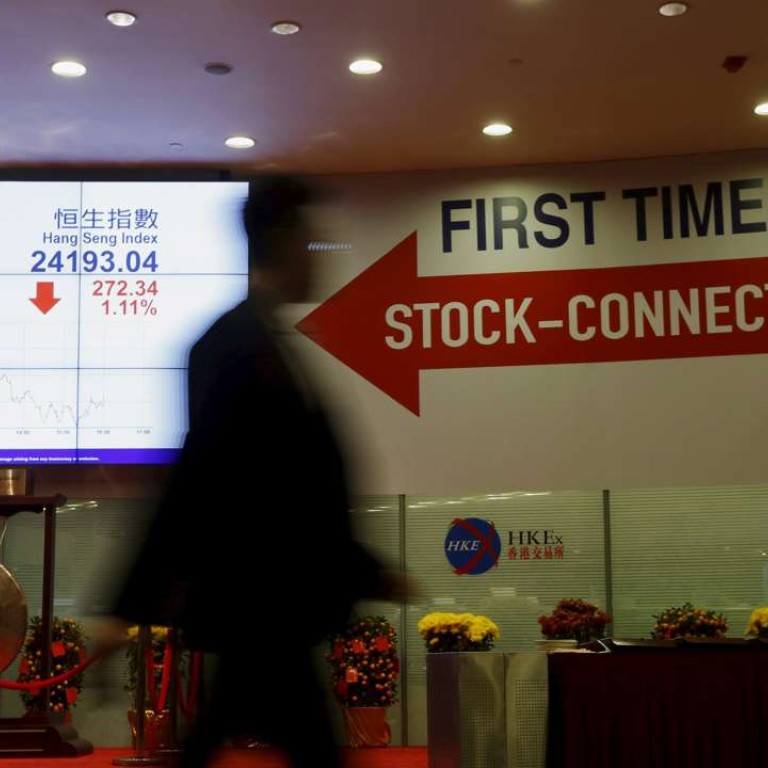
Foreign investors pile into A-shares, ahead of stock connect scheme launch
2.7b yuan rise in the value of investments held by foreign institutions, bought via the QFII scheme, from end of September and earlier this week.
Foreign institutions appear to be stealing a march on their domestic counterparts after pocketing handsome profits on their A-share investments over the past two months, as many look ahead to the soon-to-be launched Shenzhen-Hong Kong Stock Connect.
According to a report in the state-owned Securities Daily, there has been a strong 2.7 billion yuan rise in the value of investments held by foreign institutions, bought via the Qualified Foreign Institutional Investor (QFII) scheme, between the end of September and earlier this week.
QFII allows limited access to overseas financial institutions, using a quota scheme to use offshore yuan to buy mainland shares (A-shares), including stocks, bonds and money market investments.
Securities Daily’s figure is based on the third-quarter earnings reports of mainland-listed firms and those QFIIs who have became among the largest 10 shareholders of any listed firm. Its offered full details of earnings, and the number of shares QFIIs own.
The keenly anticipated Shenzhen-Hong Kong stock trading link will be similar to the existing Shanghai-Hong Kong connect, launched in late 2014.
Investors in Hong Kong will be able to buy Shenzhen-listed stocks, including many prominent technology and consumer names in the mainland. In return, mainland Chinese investors will have access to shares listed in Hong Kong.

While no specific date is set for the go-ahead, investors are betting on next Monday, November 28, as the official opening, with officials hoping for a flood of investment capital by foreign companies, as regulators attempt to create a domestic A-share market on a par with international counterparts in size and regulation.
The QFII scheme in 2003, with the aim of attracting more western institutional investors into the volatile A-share market, trading in which is still too often influenced on rumour, rather than fundamentals. It allows limited access, under a quota scheme, to stocks, bonds and money market investments.
“QFIIs have proved to have an eagle eye for finding undervalued stocks,” said Ivan Li, a dealer at Everbright Securities.
“And that rise in performance is likely to attract a fresh fund inflow, as mainland investors follow up by buying shares.”
As of September 30, 213 A-share firms had at least one QFII within their top 10 shareholders.
The Securities Daily data also showed that at least 100 of those stocks heavily invested in by foreign institutions saw massive recent fund inflows, as mainland investors, too, followed on the heels of the QFIIs to load up on qualifying shares.
Although still QFIIs represent only a small proportion of total funds invested in A-shares, their strategies and stock picks are closely monitored, and more often than not, they prove to be savvy moves delivering stable returns.
Last month another 13 QFII accounts were opened, a further strong indicator that foreign institutions were raising their A-share stakes.
Banks, food and beverage firms and electronic appliance makers were the most-heavily traded QFII stocks, according to third-quarter earnings reports of listed companies.
Securities Daily reported that QFIIs favoured blue-chip stocks, in stark contrast to mainland retail investors’ penchant for small-cap stocks.

“QFIIs’ moves on the market do act as a barometer for northbound fund strategies,” said He Yan, a hedge fund manager with Shanghai Shiva Investment.
“They may not be able to chalk up quick gains, but they understand which stocks are worth buying.”
Beijing relaxed the rules governing QFIIs in February, in an ultimately futile effort to convince index provider MSCI to include mainland shares in its emerging market benchmarks.
Under the new regulations, quotas would be determined, based on the size of the funds under management, instead of a fixed amount.
Experts said the easing in QFII rules are certainly expected to give foreign institutions greater flexibility in buying and selling A-shares, as well as arranging their asset allocations freely.
And with the new Shenzhen-Hong Kong Connect poised to go live, they agree it could help Chinese stock prices, which are still nearly 40 per cent shy of the close on June 12, 2015 when a stock market rout began, which had wiped out US$5 trillion of value from the market by late August last year.

